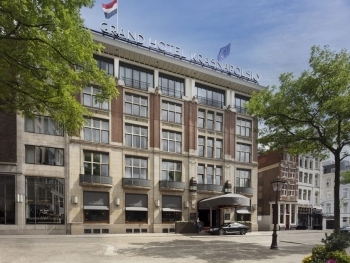The illustrious history of the Roosevelt Hotel in New Orleans, Louisiana, unfolds like a captivating saga, spanning decades of evolution, transformation, and cultural prominence.
Originally erected in 1893 by Louis Grunewald, a visionary German immigrant, the hotel emerged as the Grunewald Hotel, a testament to architectural elegance and hospitality. Its initial incarnation boasted 504 rooms, symbolizing a burgeoning era of luxury accommodation in the heart of the vibrant city of New Orleans.
In a pivotal moment of expansion and modernization, the Grunewald Hotel underwent a transformative renovation in 1908, introducing a majestic fourteen-story annex comprising 400 additional rooms. This ambitious project, orchestrated by the esteemed Milwaukee architectural firm H.C. Koch & Sons, elevated the hotel's stature and set the stage for its enduring legacy.
One of the most legendary chapters in the hotel's narrative was the advent of The Cave, a subterranean marvel that captured the imaginations of patrons with its enchanting ambiance. Conceived as one of America's earliest nightclubs, The Cave enchanted guests with its cascading waterfalls, mesmerizing stalagmites and stalactites, and captivating performances by a chorus of dancers accompanied by the infectious rhythms of Dixieland jazz.
The Grunewald Hotel continued to evolve under the stewardship of the Grunewald family until 1923, when it underwent a significant transition in ownership. Acquired by a consortium of enterprising New Orleans investors led by Joseph, Felix, and Luca Vacarro, the hotel was rechristened the Roosevelt, an homage to the esteemed legacy of former President Theodore Roosevelt.
Under the astute leadership of Seymour Weiss, whose journey from barber shop manager to esteemed hotel proprietor epitomized the American dream, the Roosevelt Hotel flourished as a beacon of opulence and sophistication. Weiss's close association with influential figures such as U.S. Senator and Louisiana Governor Huey Long underscored the hotel's pivotal role as a nexus of political and social intrigue.
The hotel's cultural significance was further amplified with the emergence of the Blue Room in 1935, heralding a new era of live music and entertainment that captivated audiences with performances by iconic artists such as Glenn Miller, Tommy Dorsey, and Sammy Kaye.
A defining moment in the hotel's storied history occurred in 1949 when Weiss introduced the iconic Sazerac Bar, a beloved institution that welcomed patrons of all genders with its progressive ethos and timeless allure.
Despite undergoing a series of rebranding efforts, including a brief stint as the Fairmont Roosevelt and Fairmont New Orleans, the hotel's essence remained intact, a testament to its enduring legacy and unwavering commitment to excellence.
Tragically, the Roosevelt Hotel endured its share of trials and tribulations, most notably the devastation wrought by Hurricane Katrina in 2005. However, its resilience prevailed, culminating in a remarkable resurgence orchestrated by Sam Friedman of the Dimension Development Company.
The hotel's triumphant revival, marked by a meticulous $170 million restoration project as part of Hilton's prestigious Waldorf Astoria Collection, reaffirmed its status as an iconic landmark synonymous with elegance, luxury, and timeless allure.
Echoing the sentiments of renowned travel critic Frommer's, the Roosevelt New Orleans Hotel embodies the epitome of cinematic splendor, exuding an aura of grandeur and sophistication that transcends mere accommodation.
Today, as a proud member of the Waldorf Astoria Hotel & Resorts portfolio, the Roosevelt New Orleans Hotel continues to enchant discerning travelers with its rich heritage, unparalleled service, and enduring legacy as a bastion of hospitality excellence in the heart of the Big Easy.

